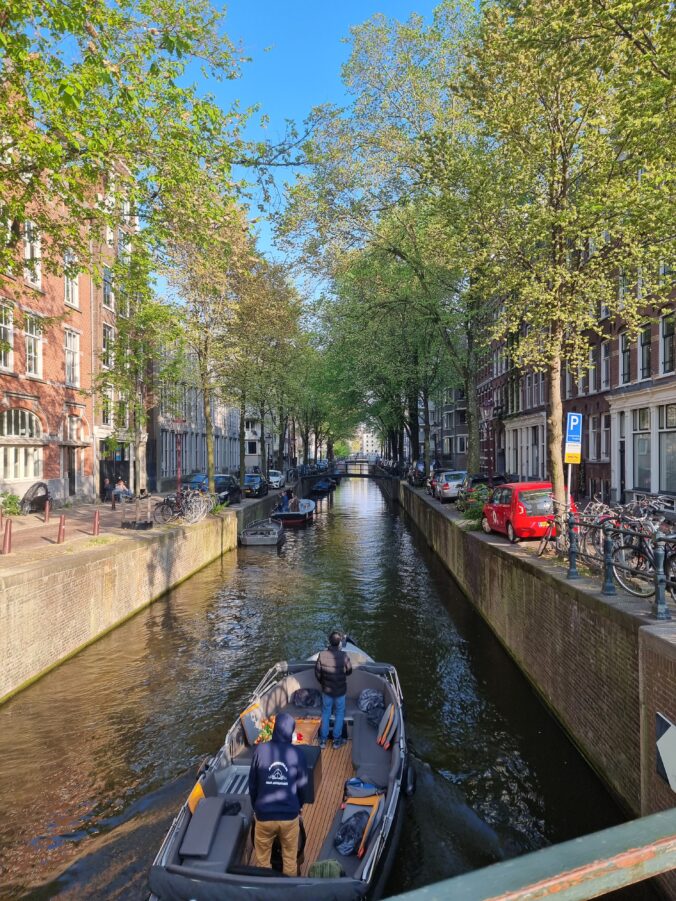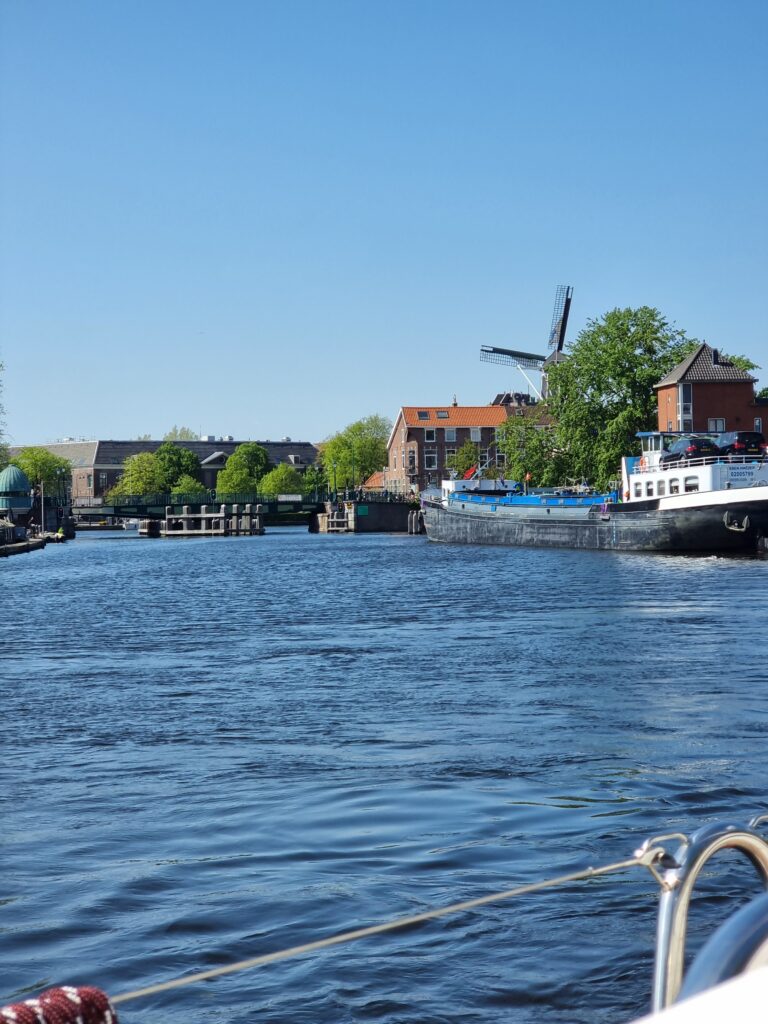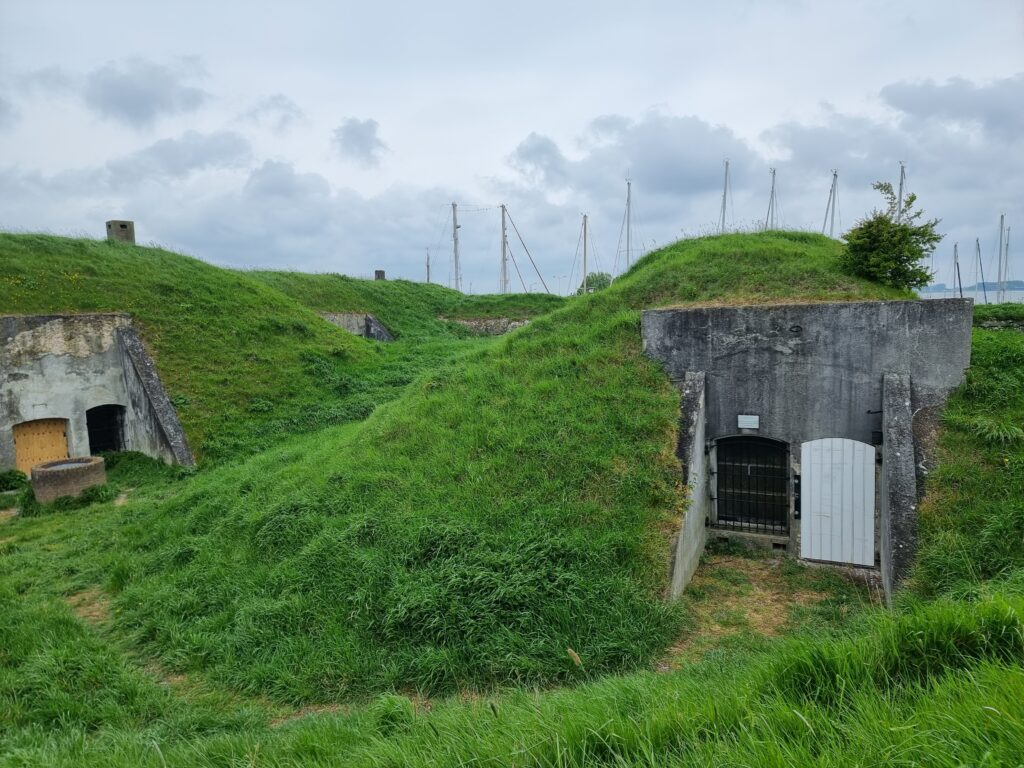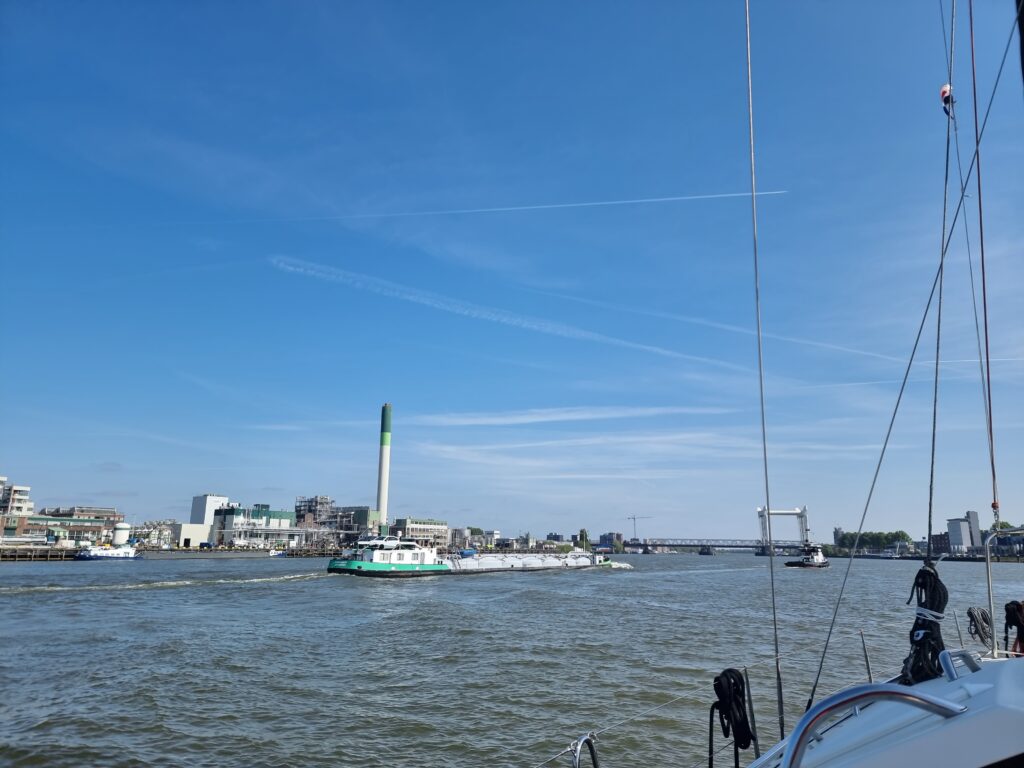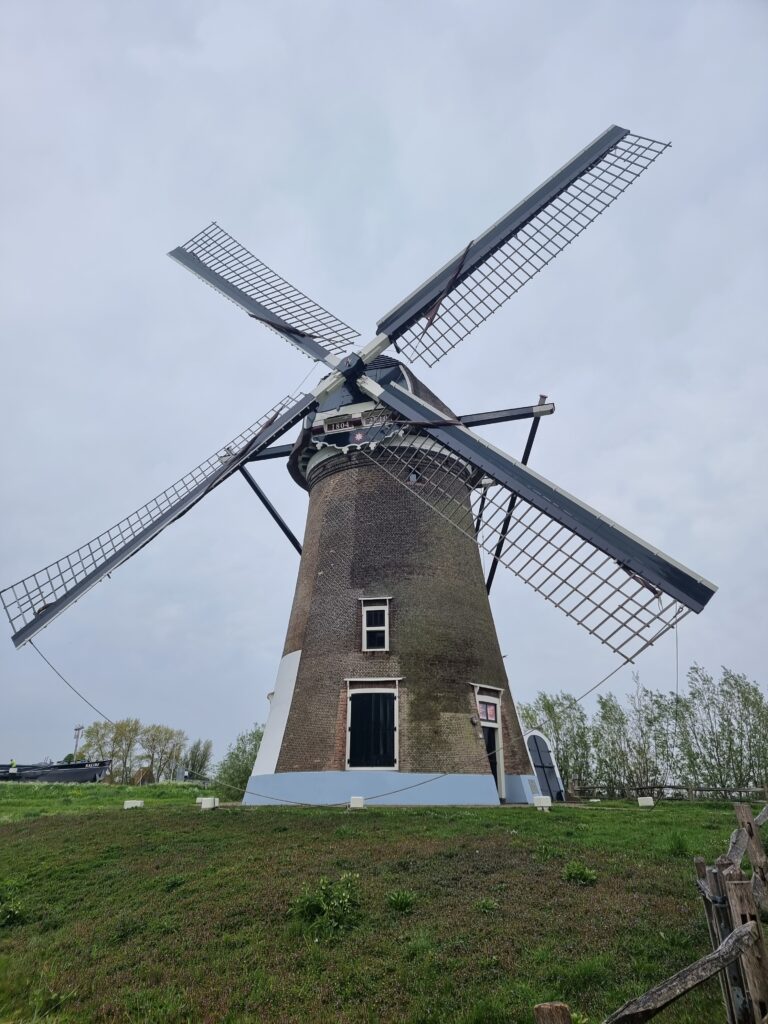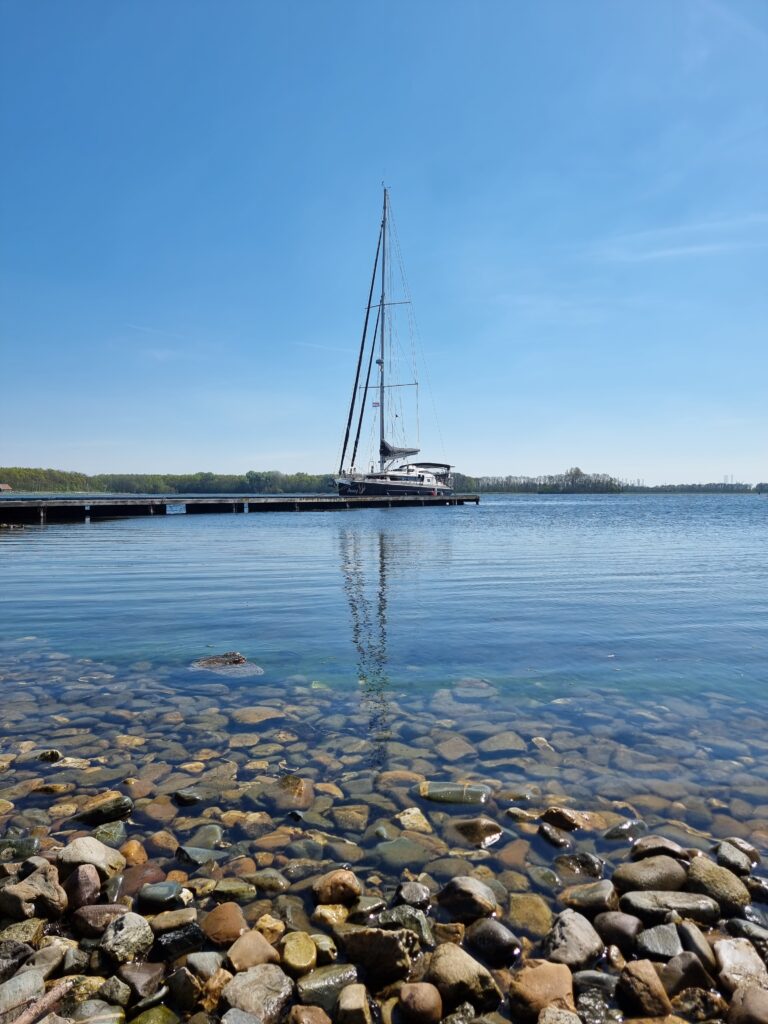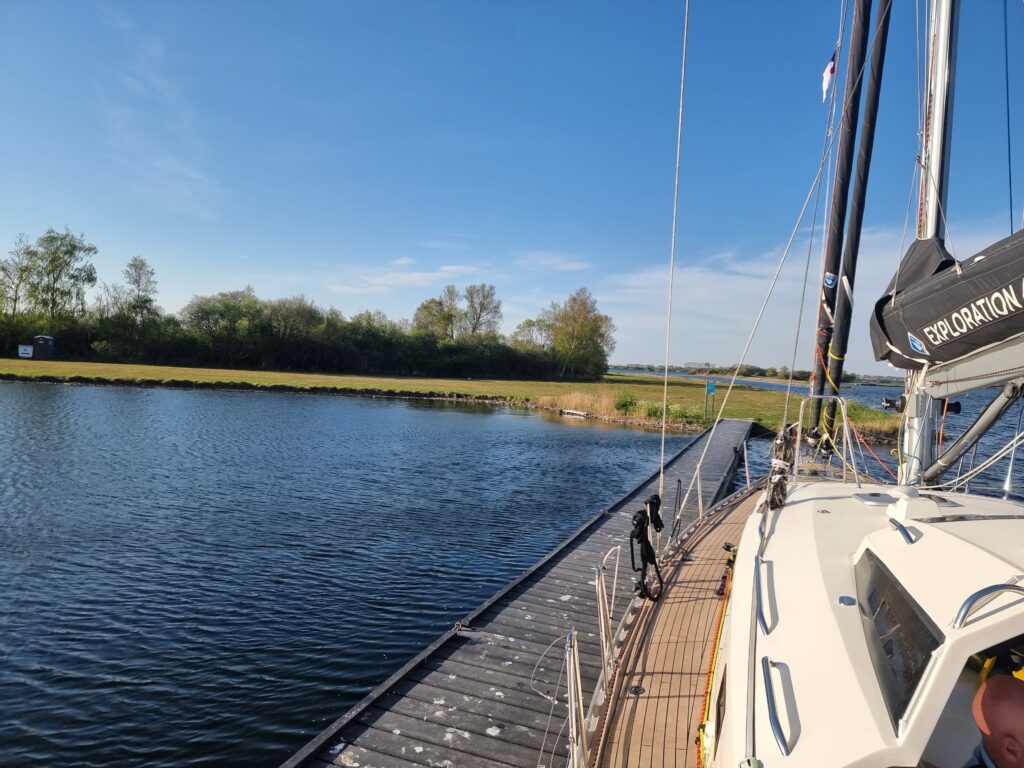
We locked out of Amsterdam and found ourselves in the Markermeer, a vast paddling pool barely deep enough to navigate. The Dutch had built special boats with only a few centimeters draft that can travel safely through these waters. It was wonderful to see these old boats still plying these waterways. For once Away’s magic foldup center board was of no use. The wind was on the nose which is the one time we really need the center board down. We motored enjoying the absence of bridges, locks and massive barges trying run us down at every turn.
Todays destination was Edam, where they make cheese. The town was impossibly picturesque with rows on rows of slightly askew houses and little lift bridges over the canals. The bridges were narrow mostly catering to bicycles and pedestrians, but tiny two seater you-must-be-close-friends cars still found a way to squeeze over them.


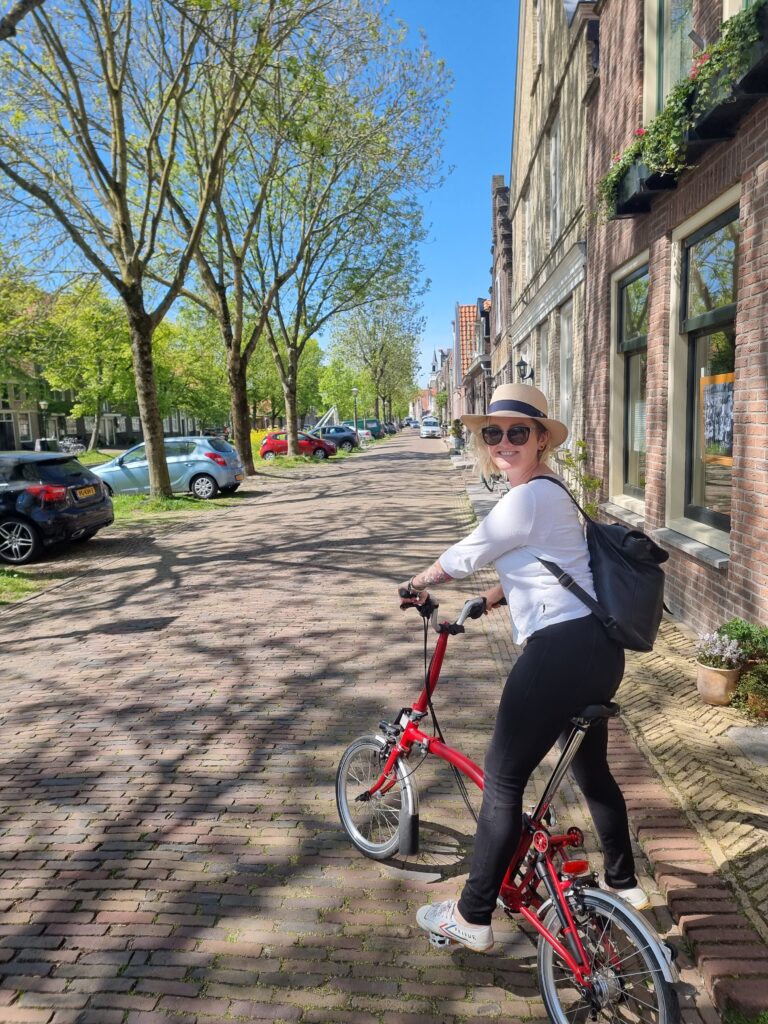
Shortly after first light, a coffee, some breakfast and some doggie business the wind blew us across the Markermeer. We traversed the inevitable lock and into the IJsselmeer, another vast pool of shallow water, but this time deep enough to sail. We were enjoying the wind on the beam, catching a group of yachts only under their headsail (did no one tell them its a race?), when we noticed a line of wind approaching. Quickly we reduced the main sail with one reef and then a second as the wind jumped over 20 knots and was soon gusting over 30. We swapped the genoa with the smaller staysail as this was a good chance to try this sail. Away revelled in the stronger winds, the other yachts disappeared behind us as we made a cup of tea and stroopwaffels.
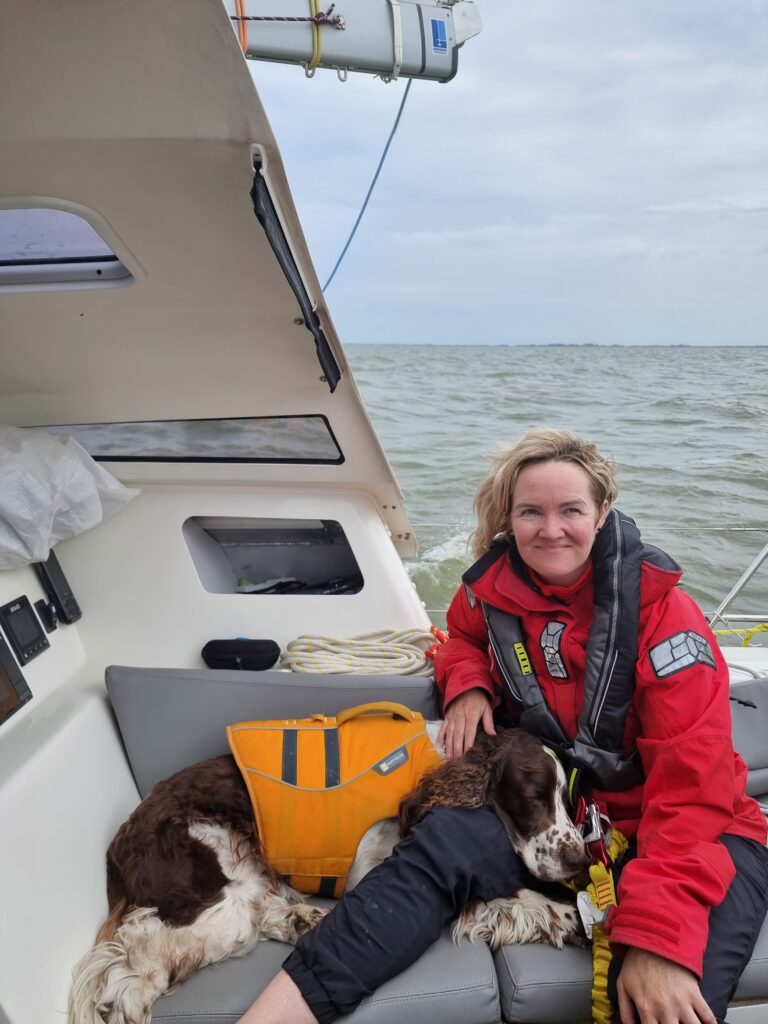

At the other side of the IJsselmeer, Makkum came into view and we headed for the marina and our first box berth. These berths have two posts at one end and a pontoon at the other. We reversed in between the posts and crashed gently into a small finger wharf that contrived to appear behind the boat. After a small adjustment we were safely ashore, no one had died and the restaurant was open for pizza and beer.
Makkum center offered a 45 minute dog walk and a chance to resupply. None of the guide books warned about the local dog that walked up to Bernie in the street and bit him on the neck (he is fine). The welcome in the local shops and cafe was much more agreeable.

The next day was race day (again). The marina we were heading for had a note on the web site that 120+ boats were coming in today in the annual Harlingen to West Terschelling race. We changed destinations to nearby Oost Vleiland and planned our route to avoid the race (really). As we arrived at Harlingen the final yacht classes were being started and we soon found ourselves at the tail end of the race. As the wind strengthened Away accelerated and we started picking our way through the fleet. The racers rounded the final mark and headed for the finish at West Terschelling, we turned away to find Bernie a sandy beach and an Oost Vleiland magnet for the magnet board.


Oost Vleiland turned out to have both magnets and vast expanses of Bernie beach. A couple of nights gave us time to plan our trip east. From here we could head out to sea and up the coast, or on the inland side of the islands through the poorly named Wadden Sea. The Wadden Sea is really a giant beach that floods at high tide allowing access for a few hours until the tide recedes and its beach again. It was an easy choice between a relaxing sail up the coast and stressful race against time through rapidly moving poorly charted drying channels.
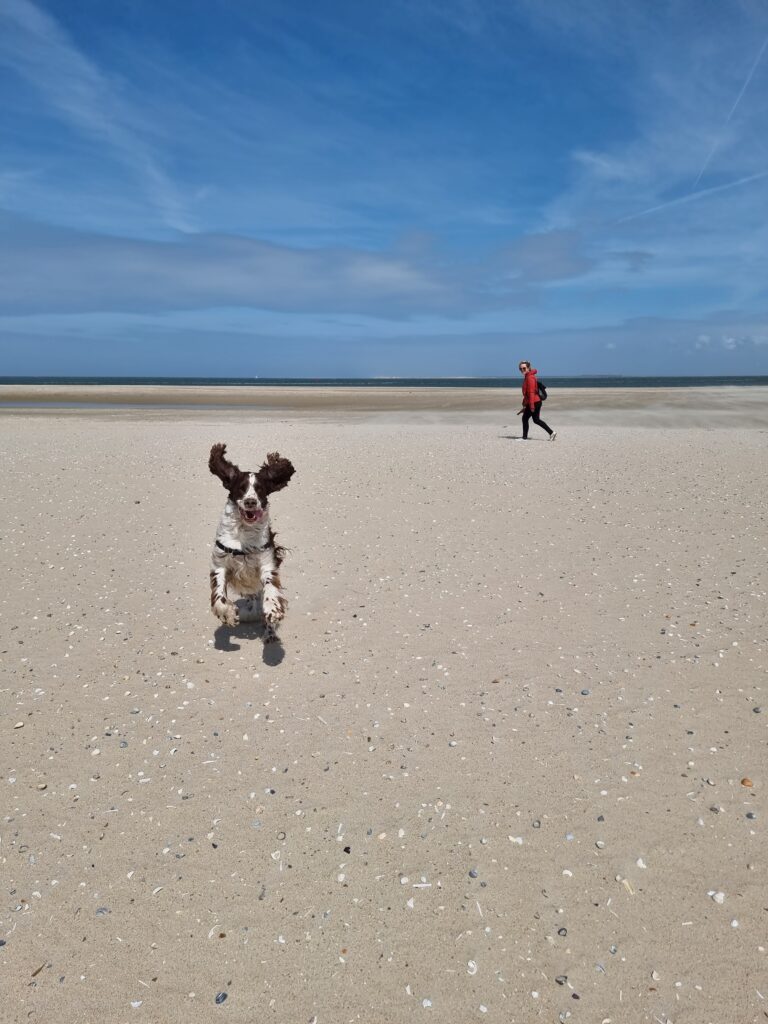
It wasn’t long after we left Oost Vleiland and headed up our first Wadden Sea channel that we noticed there were sticks across the channel. These sticks are used to show shallow water, so we decided to err on the side of caution and stop. The words in the guide book about following the buoys and channel markers not the charts quickly came to mind. The sand moves so often that the charts are really only a rough guide in this area.
The last part of the trip was the shallowest. With no markers the guide said to leave the channel at a particular marker close to high tide and with a suitable draft the destination should be attainable. As there were no markers or visual references except the occasional breaking water showing a shallow sand bank, Fi navigated from a computer screen showing a recent satellite image whilst I controlled the throttle (forward unless we hit ground, then reverse). Half an hour later we arrived at KoffieBoonenPlaat and unclenched.
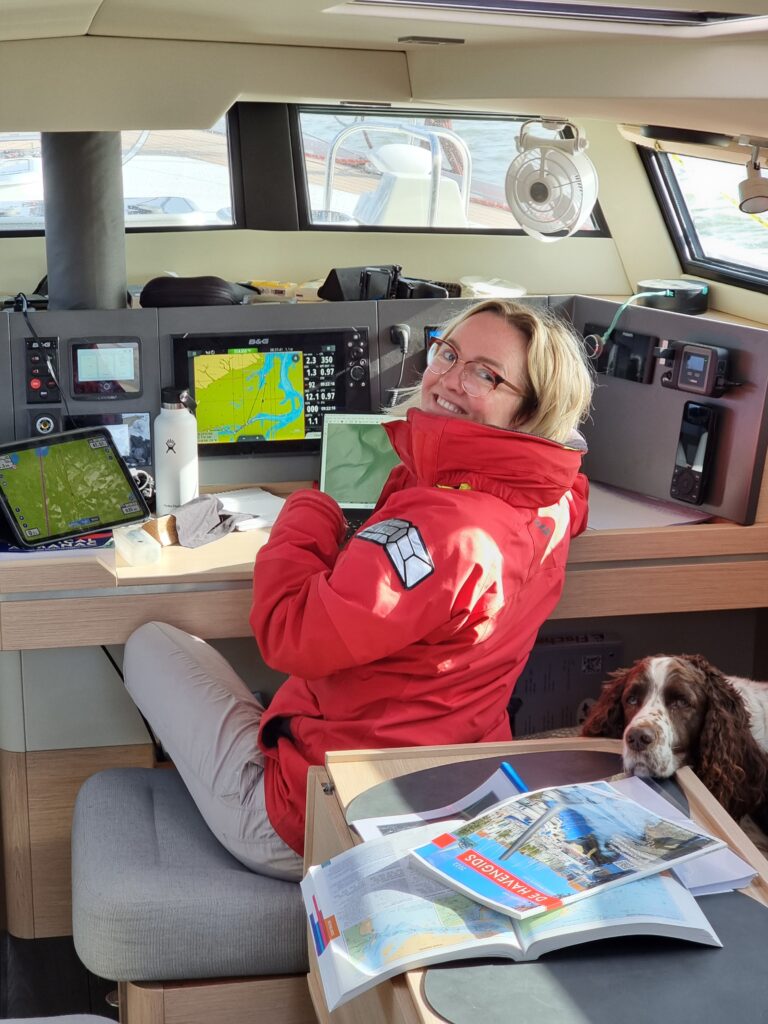
There was no one else around so we choose a spot deep enough that we could float and shallow enough that it would dry out at low tide. Then we waited for the tide to go out and triple checked the tide tables to be sure the next high tide was at least as high as the last one. Fingers crossed…

